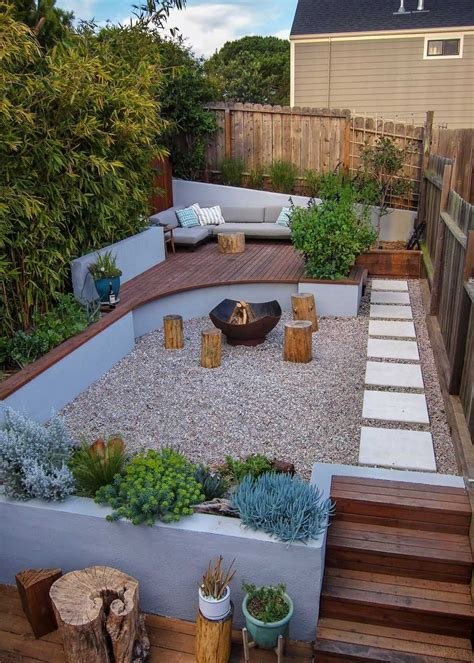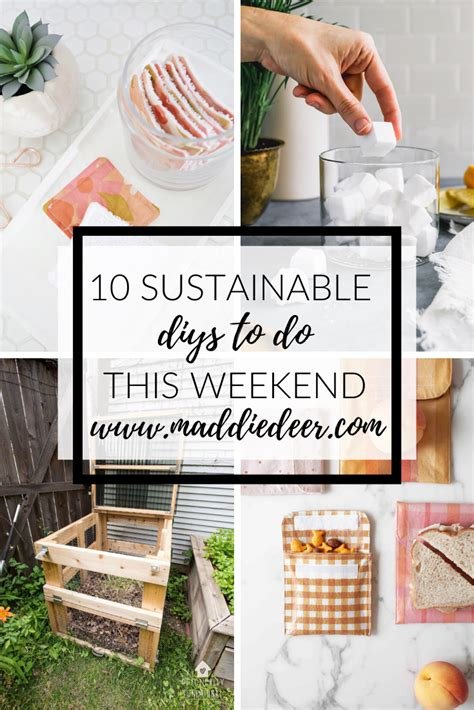Maximizing Small Outdoor Spaces with Smart Garden Design
When it comes to outdoor spaces, size isn’t everything. Small gardens or balconies can be just as enchanting and inviting as sprawling landscapes with the right design and planning. In this blog post, we’ll explore the many ways to maximize small outdoor spaces with smart garden design. From utilizing vertical space to create gardens to choosing compact and versatile plants, creating multifunctional seating and storage solutions, and implementing raised bed designs for efficient space usage, there are countless strategies to make the most of limited outdoor areas. We’ll also discuss incorporating hanging gardens for added greenery, optimizing natural light with strategic plant placements, and integrating water features to maximize relaxation. With the right approach, even the tiniest outdoor space can be transformed into a tranquil and beautiful oasis. Join us as we delve into the world of smart garden design and discover how to make the most of your compact outdoor area.
Utilizing vertical space to create gardens
When it comes to gardening in small spaces, utilizing vertical space is key to maximizing your greenery. One way to do this is by using hanging gardens. Hanging plants can be suspended from balconies, fences, or pergolas, allowing you to make the most of your available space. Not only does this add a touch of greenery to any vertical surface, but it also creates a lush and vibrant look that can transform even the smallest of outdoor areas.
Another strategy for utilizing vertical space is to incorporate trellises and vertical planters. These allow you to grow a wide variety of plants such as climbing vine vegetables, colorful flowers, and fragrant herbs against walls or fences. This not only adds visual interest to your outdoor space, but also provides you with an abundance of fresh produce and blooms.
Furthermore, the use of tall, narrow planters can create the illusion of height in a small garden, making the space feel more expansive. By strategically placing these planters around the perimeter of the garden, you can create a beautiful, lush backdrop for your outdoor space without taking up valuable ground space.
Finally, consider installing shelves or vertical racks to display potted plants. This not only adds a decorative element to your garden, but also creates valuable space for an array of plants, making use of any sunny wall or fence.
Choosing compact and versatile plants
When it comes to creating a garden in a small space, it’s essential to choose compact and versatile plants that will thrive in such conditions. These plants are not only visually appealing but also practical for limited space. One example of a compact and versatile plant is the Dwarf Japanese Garden Juniper, which is small in size and can be used as a ground cover or as a specimen plant. Its evergreen foliage and low maintenance make it perfect for small gardens and containers.
Another great option is the Dwarf English Boxwood, which is a slow-growing shrub with dense foliage. It can be used to create hedges, borders, or as a standalone plant. Its small size and ability to thrive in partial shade make it an excellent choice for compact gardens. The versatile nature of this plant allows for creative and flexible landscaping options.
Additionally, the Compacta Holly is a compact evergreen shrub that is perfect for small gardens. Its dense, dark green foliage and bright red berries provide year-round interest, making it an ideal choice for adding color and texture to a limited space. This plant is also versatile, as it can be used as a hedge, border, or foundation plant.
Lastly, the Blue Star Juniper is a compact, low-growing evergreen shrub that adds a pop of color with its silver-blue foliage. Its small size and drought tolerance make it a great choice for small gardens and rock gardens. The versatility of this plant allows for various design possibilities, making it an excellent option for limited spaces.
Creating multi-functional seating and storage solutions
Utilizing every inch of space in a garden is essential, and one way to do so is by incorporating multi-functional seating and storage solutions. This allows for the creation of a comfortable and organized outdoor living area that maximizes the available space.
When it comes to multi-functional seating, versatility is key. Choose furniture pieces that can serve multiple purposes, such as benches with built-in storage compartments or ottomans that can also be used as side tables. This way, you can have a place to sit and relax while also having a convenient storage solution for gardening tools, cushions, or other outdoor items.
In addition to seating, multi-purpose storage options are also crucial for keeping the garden tidy and clutter-free. Consider vertical storage solutions such as shelves or cabinets that can hold gardening supplies, pots, and other essentials while also serving as a decorative element in the garden. This not only maximizes space but also adds visual interest to the outdoor area.
By incorporating multi-functional seating and storage solutions, you can create a garden that is not only beautiful but also practical and efficient. With careful planning and the right furniture pieces, you can make the most of your outdoor space and enjoy a comfortable and organized garden sanctuary.
Implementing raised bed designs for efficient space usage
When it comes to maximizing the space in your garden, raised bed designs are an excellent option to consider. Raised beds allow you to take advantage of vertical space, making them a great solution for small yards or urban gardens with limited space. By elevating the planting area, you free up the ground for other purposes such as walkways or additional seating areas.
Not only do raised beds help with efficient space usage, but they also provide better control over soil quality and drainage. This is especially beneficial for urban gardens where the soil quality may be less than ideal. Additionally, raised beds make it easier to manage pests and weeds, ultimately saving you time and effort in maintenance.
For efficient space usage, you can also incorporate multi-level raised bed designs to further maximize the vertical space in your garden. These multi-level designs allow you to grow a variety of plants in a compact area, providing diversity and visual interest to your garden.
Overall, implementing raised bed designs is a smart and practical approach to make the most of your garden space. Whether you have a small urban garden or a compact backyard, raised beds offer a versatile and efficient solution for achieving a beautiful and productive garden.
Incorporating hanging gardens for added greenery
When it comes to maximizing greenery in your outdoor space, incorporating hanging gardens can be a game-changer. Whether you have a small balcony or a spacious backyard, utilizing vertical space with hanging gardens can add a refreshing touch of nature to your environment.
By choosing compact and versatile plants such as succulents, air plants, and trailing vines, you can create a lush and vibrant display without taking up valuable floor space. These plants are low-maintenance and can thrive in hanging planters, making them an ideal choice for vertical gardens.
One of the benefits of incorporating hanging gardens is the ability to add layers of greenery at varying heights, creating a dynamic and visually appealing display. This not only adds visual interest to your space but also allows you to optimize the natural light by strategically placing the hanging planters in areas where they can receive adequate sunlight.
Whether you opt for traditional hanging baskets, wall-mounted planters, or even DIY hanging plant shelves, incorporating hanging gardens adds depth and dimension to your outdoor space, making it an oasis of greenery and tranquility.
Optimizing natural light with strategic plant placements
One of the key elements in creating a successful garden is to optimize the natural light available. By strategically placing plants in areas where they can receive the most sunlight, you can ensure that they thrive and flourish. Consider the direction of the sun and the shade patterns in your outdoor space to determine the best locations for your greenery.
Plants that require full sun should be placed in areas that receive direct sunlight for at least 6 hours a day. This may mean positioning them in open areas away from buildings or trees that could block the sunlight. Alternatively, you can use reflective surfaces such as white walls or mirrors to redirect sunlight towards plants that need it.
On the other hand, plants that prefer shade can be placed in areas of your garden that are shielded from the harsh midday sun. This could be under the canopy of trees or in the shadow of tall structures. By understanding the natural light conditions in your garden, you can maximize the growth and health of your plants.
Strategic plant placements not only enhance the aesthetics of your garden but also contribute to the overall well-being of your outdoor space. By harnessing the power of natural light, you can create a lush and vibrant garden sanctuary that you can enjoy throughout the year.
Integrating water features to maximize relaxation
Integrating water features into your garden can create a tranquil and calming environment that promotes relaxation. Whether it’s a small trickling fountain, a larger pond with aquatic plants, or a babbling stream, the sight and sound of water can have a soothing effect on the mind and body.
Water features can also attract wildlife such as birds and butterflies, adding to the overall natural ambiance of your garden. The gentle movement of water and the reflection of sunlight on its surface can create a peaceful and serene atmosphere, making it the perfect place to unwind and de-stress after a long day.
By strategically placing water features in your garden, you can maximize the relaxation benefits. Consider positioning a fountain near a seating area or incorporating a pond into a meditation space. You can also use water features to create focal points and draw attention to specific areas of your garden, enhancing the overall visual appeal and providing a sense of tranquility.
When integrating water features, it’s important to consider maintenance and sustainability. Choose a design that is easy to maintain and uses water efficiently. By incorporating water-saving technologies and eco-friendly practices, you can minimize environmental impact while enjoying the calming effects of water in your garden.
Using mirrors to create an illusion of larger space
Maximizing the space in your garden can be achieved through various techniques. One innovative method is the use of mirrors to create an illusion of a larger space. By strategically placing mirrors around your garden, you can visually expand the area and create a sense of depth and dimension.
In addition to creating the illusion of a larger space, mirrors also reflect natural light, which can brighten up shaded areas and improve overall lighting in the garden. This can be especially beneficial for plants that require ample sunlight for their growth and development.
When using mirrors in your garden, it’s important to consider the placement and angles for maximum effect. You can position them to reflect attractive features such as an archway, a beautiful flower bed, or a captivating sculpture, enhancing the visual appeal of the garden.
Moreover, mirrors can be incorporated into various garden elements such as trellises, fences, or freestanding structures to seamlessly blend with the overall design while also serving a practical purpose.
Designing smart irrigation systems for conservation
When it comes to designing smart irrigation systems for conservation, there are several factors to consider. The goal is to efficiently water plants and minimize water usage. One way to achieve this is by utilizing drip irrigation systems, which deliver water directly to the roots of plants, reducing evaporation and water waste. This method also helps prevent weeds from growing between plants, saving both water and time.
Utilizing moisture sensors can also be a smart way to conserve water in the garden. These sensors can detect the level of moisture in the soil and automatically adjust the irrigation system accordingly. This prevents overwatering and ensures that plants receive the proper amount of water they need to thrive, saving water and promoting healthier plant growth.
Another way to design a smart irrigation system for conservation is by incorporating rainwater harvesting. Collecting rainwater in barrels or tanks allows gardeners to use this natural resource to water plants, reducing reliance on traditional water sources. This not only conserves water but also reduces water bills and promotes sustainability in the garden.
Finally, choosing the right irrigation system for specific plant needs and garden layouts can also contribute to water conservation. Different types of plants have different watering requirements, so customizing irrigation systems to meet these needs can help conserve water by preventing overwatering or underwatering. Additionally, investing in high-quality, efficient irrigation equipment can further maximize water conservation efforts in the garden.
Utilizing movable and flexible garden elements for adaptability
When designing a garden, it’s important to consider the use of movable and flexible elements to maximize adaptability. Whether it’s arranging furniture or changing the layout of plants, incorporating movable and flexible garden elements allows for easy adjustments and changes to suit different needs and occasions.
One way to utilize movable and flexible garden elements is by investing in modular furniture that can be easily rearranged to accommodate different seating arrangements or storage needs. This can include pieces such as modular benches, tables, and planters that can be easily moved around to create new configurations and adapt to different activities.
In addition to furniture, plant containers can also be a great way to incorporate movable and flexible elements into a garden. Container gardens allow for easy rearrangement of plants and can be moved to different locations to optimize growing conditions or create new visual focal points within the garden.
Overall, the use of movable and flexible garden elements not only adds versatility and adaptability to a garden space, but also allows for ongoing creativity and customization as the needs and preferences of the garden owner change over time.
Frequently Asked Questions
How can I utilize vertical space to create gardens in a small outdoor area?
You can utilize vertical space by using trellises, vertical planters, hanging pots, and wall-mounted gardens to grow plants upwards instead of outwards.
What are some compact and versatile plants that are suitable for small outdoor spaces?
Some examples of compact and versatile plants include herbs, succulents, dwarf varieties of shrubs and trees, and flowers such as pansies, petunias, and marigolds.
How can I create multi-functional seating and storage solutions for my small outdoor space?
You can create multi-functional seating and storage solutions by using furniture with built-in storage, convertible benches, and seating that can double as planters or tables.
What are the advantages of implementing raised bed designs for small outdoor spaces?
Implementing raised bed designs allows for efficient space usage, better soil drainage, easier maintenance, and the ability to control soil quality and composition for optimal plant growth.
How can I incorporate hanging gardens in my small outdoor space for added greenery?
You can incorporate hanging gardens by using hanging baskets, tiered planters, and vertical gardens to create lush greenery without taking up valuable ground space.
What are some ways to optimize natural light with strategic plant placements in a small outdoor space?
You can optimize natural light by placing sun-loving plants in areas that receive the most sunlight and using reflective surfaces or mirrors to bounce light to shadier areas.
How can I integrate water features to maximize relaxation in my small outdoor space?
You can integrate water features such as fountains, small ponds, or cascading waterfalls to provide a soothing and calming atmosphere, making the most of your small outdoor space.
What are the benefits of using mirrors to create an illusion of larger space in a small outdoor area?
Using mirrors can create the illusion of more space and depth, amplify natural light, and visually expand the boundaries of a small outdoor area.
How can I design a smart irrigation system for conservation in my small outdoor space?
You can design a smart irrigation system by using drip irrigation, rain barrels, moisture sensors, and programmable timers to efficiently water your plants while conserving water.
What are some ways to utilize movable and flexible garden elements for adaptability in a small outdoor space?
You can utilize movable and flexible garden elements such as portable planters, modular furniture, and folding screens to easily reconfigure and adapt your outdoor space to different needs and occasions.






